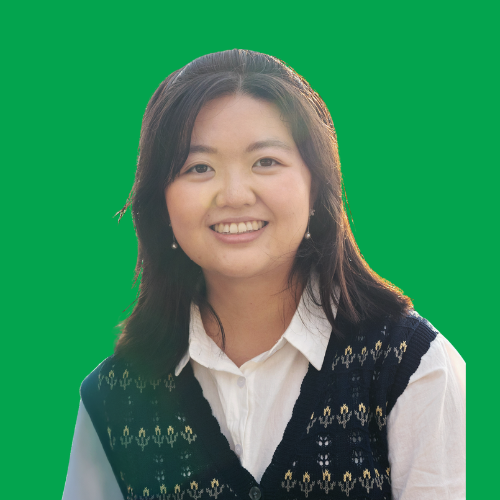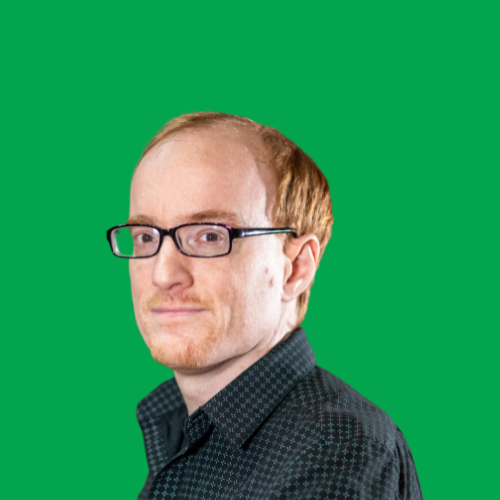
We're pleased to honor seven highly qualified PhD students and professionals for their work in post-secondary education & workforce development research. Thanks to our travel grant provider, Ascendium Education Group and congratulations once again to our grantees!

From left to right: Yerin Yoon, Lavar Edmonds, Hoyun Kim, Julia Honoroff, Luyu Du, Xingchen (Stars) Xu, Nico Rojas Souyet
 Luyu Du
Luyu Du
Arizona State University, Center for Organization Research and Design (CORD)
My research interests include science and higher education policy, and scientific workforce development. I study higher education institutions not only as institutions of knowledge production, but also as engines for preparing the scientific and broader workforce to benefit society. That is, I view U.S. universities (whether public or private) as critical social enterprises that pursue scientific discovery and innovation to advance social progress and serve public values. Ultimately, I hope that my work contributes to identifying effective strategies that would enhance the alignment of higher education systems with societal needs.
For my PhD dissertation, I investigate how institutional environments and shifting science policy shape the way in which academic scholars collaborate with non-academic partners (e.g., government, nonprofit, local communities), focusing on the co-production of use-inspired knowledge for addressing complex social problems. Apart from my dissertation, my research work also considers issues of equity and inclusion in higher education, examining how gender, race/ethnicity, citizenship, and first-generation status interactively affect scientific career development. By connecting science and higher education policy with the development of the scientific workforce, my research speaks to ongoing discussions about S&T innovation and public value creation in higher education.
Session Link: Knowledge Co-Production
 Lavar Edmonds
Lavar Edmonds
Stanford University
My research largely focuses on topics at the intersection of education, labor economics, and economic history. The work I'm presenting at APPAM is on how colleges affect their local school districts via school funding: college as non-profits exempt from property taxes may be drains on local districts that rely on property taxes for funding vs. colleges could boost property values via positive effects on local economic activity. Other projects in progress include (1) a study of school desegregation's long-run effects on Black teacher labor markets/Black student college choice, building on evidence that thousands of Black teachers lost their jobs in the 1960s and 70s following court-ordered school desegregations and (2) how firm hiring practices can affect post-college occupational choice and educational mismatch, whereby firms concentrate their hiring on certain colleges attended, and students from other institutions are crowded out of the industry earlier in their careers.
Session Link: Educational Inequality
 Julia Honoroff
Julia Honoroff
University of Pennsylvania
My work in the field of workforce development focuses on understanding and addressing the barriers that families face in pursuing education, training, and stable employment. I approach this through a mixed-methods lens, combining quantitative evaluation with qualitative inquiry to capture the structural and human dimensions of labor market participation. Much of my research centers on parents engaged in government funded education and training programs, with particular attention to how childcare, family responsibilities, and social policies shape opportunities for economic mobility.
I have conducted large-scale analyses of national evaluations such as the Health Professions Opportunity Grants (HPOG 2.0), examining how different modes of childcare provision affect program outcomes like credential attainment and employment. Complementing this, my qualitative work explores parent experiences in family-centered initiatives like CareerAdvance in Tulsa and in citywide efforts such as Chicago’s Universal Pre-K rollout. Across these projects, I highlight how systems of early care and education intersect with workforce policies to either support or constrain families’ economic advancement.
Grounded in a two-generation perspective, my research underscores that effective workforce programs must account for the dual needs of parents and children. Structural inequities—such as poverty, childcare shortages, and racial disparities—often undermine parents’ ability to advance, while integrated, family-centered supports create pathways for both parental mobility and child well-being. By centering caregivers within workforce development policy, my work contributes evidence to inform program design that strengthens opportunity across generations.
Session Link: Certification & Employment Success
 Hoyun Kim
Hoyun Kim
UC Berkeley, School of Education
My work focuses on advancing systemic equity and student opportunities in postsecondary education, with particular attention to community colleges and the pathways they provide for diverse student populations. As a researcher and PhD candidate in education policy, I examine how institutional structures and programs such as advising and dual enrollment shape students’ educational trajectories, including goal setting, persistence, and transfer outcomes. My quantitative analyses highlight how demographic characteristics, such as gender, race/ethnicity, age, and enrollment status, interact with institutional supports to influence student success. Through qualitative research, I have also highlighted policy impacts and outcomes at the organizational-level: rather than only look at a direct relationship between policy and student outcomes, I examine how policy influences the very educational institutions that mediate and provide opportunities to students.
Session Link: Dual Enrollment
 Nicolas Rojas Souyet
Nicolas Rojas Souyet
Columbia University
Teacher shortages are a global challenge. Half of all U.S. schools have experienced shortages in the 2022-2023 school year, and the world faces an estimated deficit of 44 million teachers by 2030. Service scholarships are a popular solution, offering grants to attract students to enroll, graduate, and teach in high-need areas. These grants require a commitment to teach for a specified number of years in a targeted type of school. If the agreement is not fulfilled, the grant is converted into a loan. Such policies are particularly prominent in U.S. teaching programs and are being discussed in the context of the current shortage crisis. However, evidence on their causal impact on recruitment is scarce. How do these programs recruit in practice?
In my job market paper, which I will present at APPAM, I study the impact of a free-tuition program in Chile, similar to some U.S. programs, that recruits high-scoring students to teach in publicly funded schools. I use a regression discontinuity design with 14 years of millions of national observations. The program increased recipients’ probability of teaching in such schools by close to 15 percentage points even after the service agreement ended. With a novel empirical strategy, I show the impact is limited to boosting initial enrollment in teaching programs while reproducing sizable attrition patterns from enrollment to teaching. Only 5% of the recipients fulfilled the agreement they signed, under which grants convert into loans much larger than those permitted under the student loan system.
Session Link: Service Scholarships
 Xingchen Xu
Xingchen Xu
Arizona State University
My research examines postsecondary education and workforce development from both international and domestic perspectives. At the international level, I study how familial, social, and cultural expectations shape the academic and career decision-making of Chinese and Indian STEM doctoral students in U.S. institutions. Using a phenomenological approach, I found that while Indian students often face strong familial and societal pressure to pursue high-status careers, Chinese students encounter greater flexibility but are shaped by policies such as the One-Child Policy. Across both groups, U.S. doctoral education fosters autonomy and provides a pathway into the U.S. workforce, though unstable immigration policies and limited CPT/OPT options present significant barriers. These findings highlight the need for more comprehensive policies to support retention of highly skilled international talent.
At the domestic level, my work also focuses on undergraduate pathways, specifically engineering and computer science students. Through large-scale analyses of national datasets (e.g., BPS, B&B, NCSES SDR), I examine how institutional experiences, financial aid, and academic choices influence persistence, degree attainment, and workforce transitions. By applying advanced quantitative methods such as machine learning and longitudinal modeling, my research identifies key factors that shape students’ educational outcomes and career readiness.
Together, these projects connect individual student experiences with systemic policies, offering insights for higher education leaders and policymakers to strengthen both domestic and international pipelines into the STEM workforce.
Session Link: STEM Doctoral Students Poster
 Yerin Yoon
Yerin Yoon
Boston College
My work examines how educational policies and programs can better support students’ transition into postsecondary education and the workforce, with a focus on Career and Technical Education (CTE). In a paper I will present at the 2025 APPAM conference, “Selection into Technical Education and Postsecondary Outcomes at the Academic Threshold,” I study whether CTE can serve as an alternative pathway for lower-achieving students. Keeping these students engaged in school and connected to the labor market is essential for both individual mobility and broader social equity.
Leveraging the Massachusetts high school graduation exam threshold, I show that receiving a barely lower performance signal on state test scores induces students to pursue CTE in later grades, especially in high-quality programs. Using a Difference-in-Discontinuities design, I compare postsecondary outcomes between students with and without access to CTE at this academic margin. I find that CTE access increases on-time high school graduation by 2 percent and four-year college enrollment by 6 percent, offsetting the negative effects of the low performance signal.
The impacts are particularly strong for Black and Hispanic students. Among those entering the workforce directly after high school, earnings in the first year rise by 12 percent. These findings highlight how performance signals shape students’ educational trajectories and underscore the importance of expanding high-quality CTE opportunities in comprehensive high schools. My broader research agenda continues to investigate how secondary education can provide more equitable and effective pathways into both college and the labor market.
Session Link: Postsecondary Outcomes